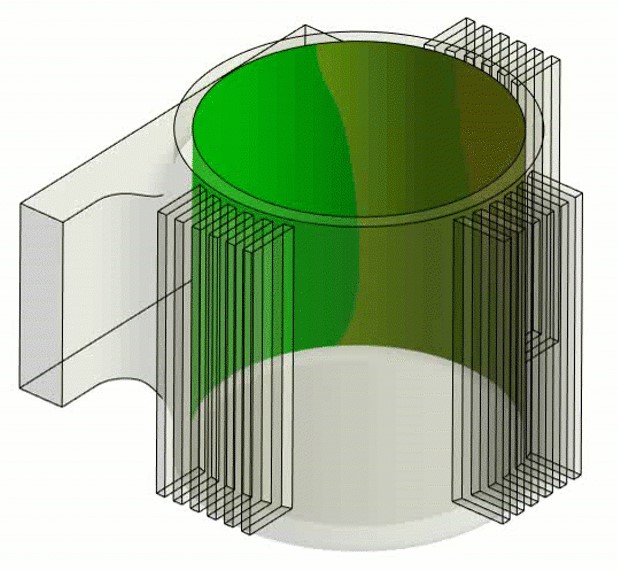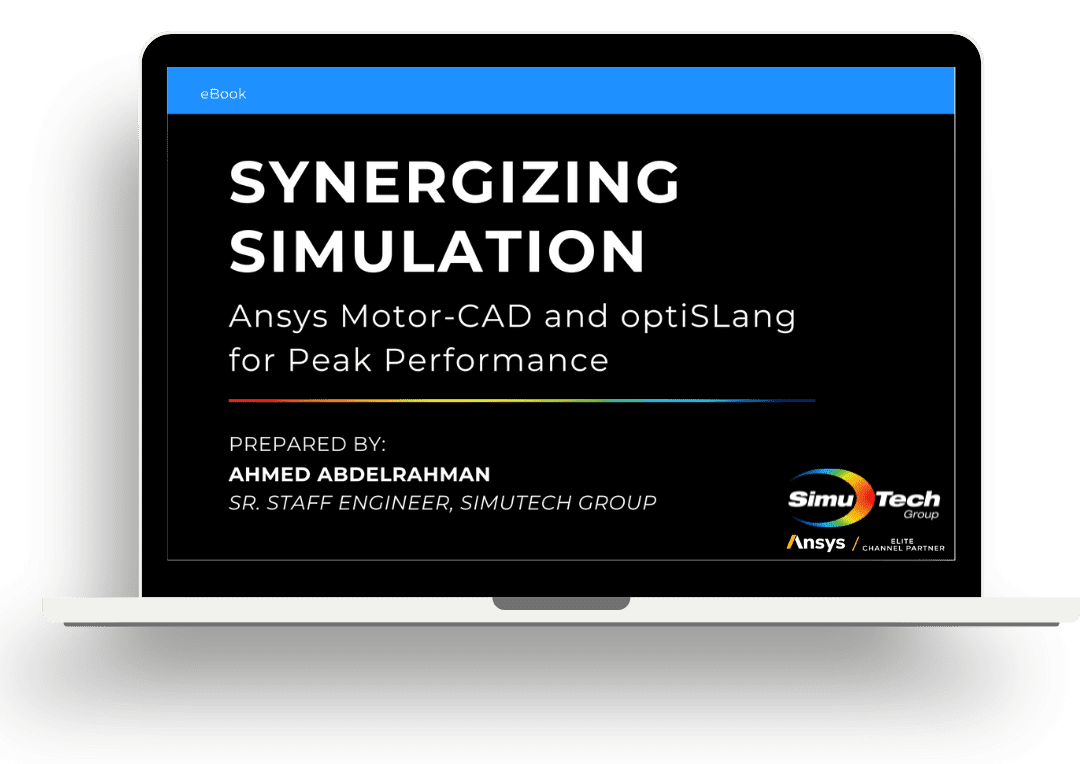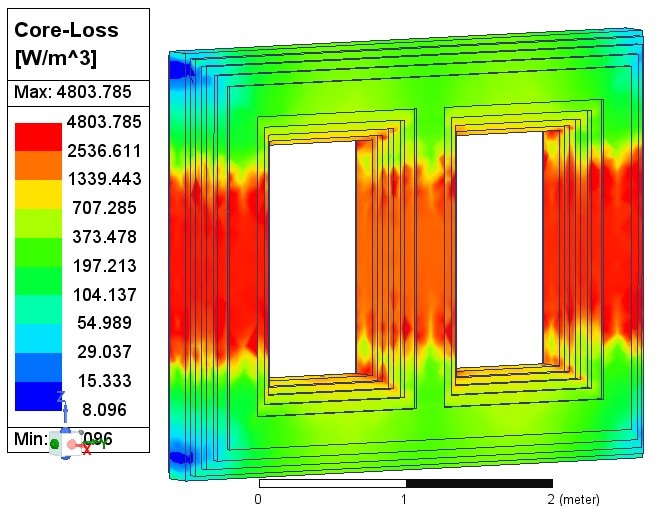On February 6, 2024, Ansys unveiled the newest release (referred to as 2024 R1) of their simulation engineering software products. 2024 R1 streamlines engineering workflows, facilitates stronger collaboration, fosters real-time interactions, and elevates project outcomes as well as elevates user experience and incorporates AI uses cases.
Ansys deploys “releases” as a structured approach to introduce new versions of its software. These releases typically incorporate a set of updates, improvements, new features, bug fixes, and optimizations. By deploying releases, Ansys ensures that its software continues to innovate and align with the evolving landscape of engineering simulation and analysis. Users can leverage these releases to access the latest features, benefit from performance improvements, and stay at the forefront of simulation technology.

Ansys 2024 R1 sets itself apart with a cohesive interface across products that streamlines intricate processes and therefore boosts productivity. Through seamless native integration, this release aims to eliminate obstacles in collaborative engineering settings, promote instant interactions, and improve project results. The incorporation of an Dark Mode and contemporary design underscores Ansy’s continued dedication to innovation, delivering users an aesthetically pleasing and highly efficient experience.
Product Highlights
2024 R1 empowers distributed engineering teams with access to new technologies and improved performance. It combines a range of enhanced numerics capabilities, performance improvements, and cross-disciplinary engineering solutions to equip companies with advanced physics solvers, scalable GPU-based computing, and seamless workflows.
3D Design
Ansys Discovery’s latest release focuses on effortless precision, smart model preparation, and accelerating design exploration.
- Reduce GPU memory requirements and enhance simulation accuracy up to 10x with effortless precision.
- Cut setup time by 50x with Smart Model Prep plus automated weld creation and associative physics transfer.
Accelerating design exploration introduces the optiSLang plug-in for optimization, sensitivity studies, and one-click burst to cloud capability, allowing up to 100 parallel simulations on Ansys Cloud.
Did you know DesignModeler and SpaceClaim have entered maintenance mode? Watch this on-demand webinar where we’ll guide you through the seamless migration from DesignModeler and SpaceClaim to Ansys Discovery.
Additive
Ansys’ latest Additive Manufacturing (AM) release enhances 3D printing through Fidelity, Usability, and Optimization.
- Focusing on Fidelity ensures greater precision in capturing process parameters like LPBF and DED.
- Usability enhancements include streamlined workflows and tools like LPBF Setting Template Save/Load, simplifying job setup.
- Optimization features like Distortion Compensation restart and DED Auto-dwell time boost productivity by automating complex processes.
Digital Twin
Ansys has launched Ansys 2024 R1, which extends its digital twin offering with new simpler optimization algorithms for parameter calibration. The new release also brings several improvements to simplify Fusion workflow with multi-file selection when importing files and settings saved for future sessions to ensure a more efficient user experience. Ansys 2024 R1 enables transient response for different static parameters values, along with visualization in SRB interface ROM values on each timesteps with the time slider. Finally, Ansys Twin Builder offers support for several new Mechanical applications through LS-DYNA.
Electronics
In Ansys 2024 R1, Ansys Electronics continues to demonstrate its multi-decade leadership in computational electromagnetics. Ansys simulation technology supports innovative product development in electronics across a broad range of markets and applications. Improvements in simulation performance, meshing, pairing with other Ansys tools, automated workflows and modeling capabilities extend Ansys leadership in electromagnetic simulation and computational multiphysics.
Fluids
The Fluids product line continues to deliver critical enhancements that improve solver performance, increase end-user productivity, and provide new capabilities for complex applications.
In Ansys 2024 R1, the Fluids suite delivers enhancements boosting solver performance, improving user productivity, and providing new capabilities for complex applications. Notable improvements in Ansys Fluent include Fluent Web UI, a light client application for connecting to remote jobs via a web browser. Solver enhancements, including new capabilities for the Fluent GPU Solver, extend the range of applications benefiting from GPU performance.
Materials
In Ansys Granta 2024R1, a massive new step in sustainability tools is taken by providing a new sustainability add-on to Ansys Granta MI that will help companies develop more sustainable products by understanding and reducing their environmental impact at the earliest stages of design, all within the native CAD, Simulation or PLM environment.
Optics & Photonics
Ansys Optics continues to push the innovation envelope to deliver accurate, high-performance simulation capabilities for optics and photonics designers. The 2024 R1 release, delivers powerful capabilities that speed time to result, improve simulation accuracy, and expand interoperability with other Ansys products. The release introduces powerful capabilities in optics workflows, along with enhancements in Lumerical, Zemax, and Speos core solvers.
Ansys Optics has focused on a collection of new features and capabilities primarily around enabling high-efficiency multi-scale optics simulation and analysis to address several industry design challenges, inclduing Metalens Simulation and Design Enhancements and Streamlined and Comprehensive Straylight Analysis.
Structures
In 2024 R1, the Structures Product Line delivers new features and capabilities enabling users to efficiently solve larger, more complex models, including:
- Accessing and interacting with Mechanical is more flexible and efficient than ever, with new dark and light themes maintaining consistent user experience across Ansys products, as well as a standalone version of Mechanical offering easier access for scripting and single-model analyses.
- Improved noise, vibration, and harshness (NVH) simulations with major enhancements for streamlining vibro-acoustic workflows, including:
- Dedicated meshing workflows for BEM, internal, and external FEM acoustics simulations reduce total meshing time of complex geometries by 12X by streamlining the meshing process.
- FEM acoustics simulations can see performance improvements ranging from 5-50X, in terms of memory, solve time, and disk space, with frequency-based acoustics adaptivity, a new load mapping architecture, and order-based harmonic analysis for frequency spacing.
- To fully support end-to-end NVH workflows, all capabilities of Ansys Sound Pro and Ansys LS-DYNA acoustics solvers are now included in Mechanical Enterprise.
- In 2024 R1 with the R15 LS-DYNA solver version, we introduce a new eigenmodes solver called Fast Lanczos for large models with large number of modes computed. This solver is more accurate with faster performance when compared to current approaches. For an electric car model, the Fast Lanczos solver was about 8X faster when compared to traditional Lanczos solver
- With PySherlock, users can automate Sherlock’s capabilities using Python-based APIs and integrate seamlessly with other technologies.
- Sherlock is now available on Linux, which allows users to choose the operating system that is best suited to their needs and preferences.







